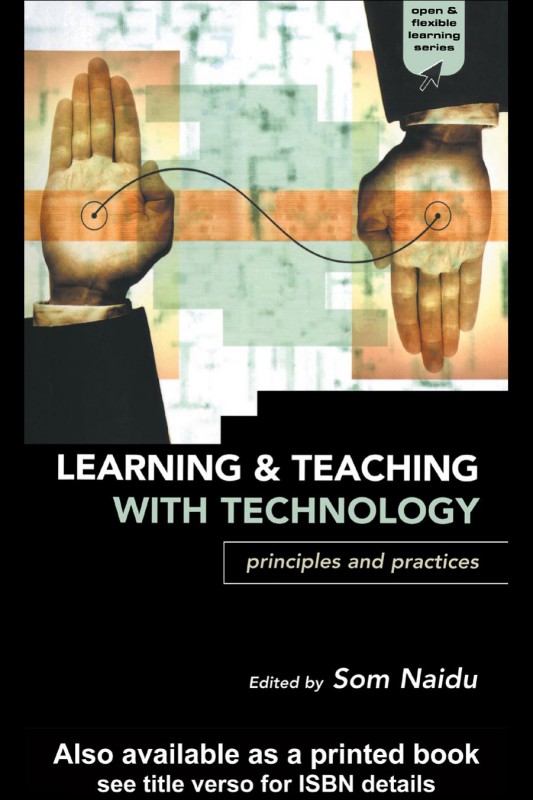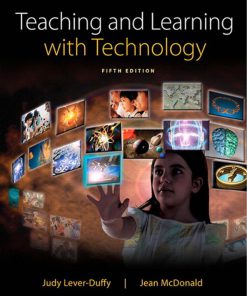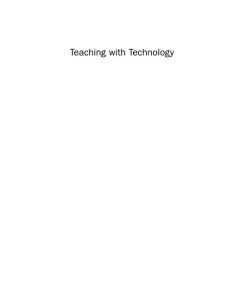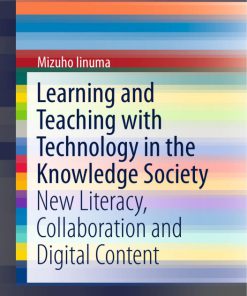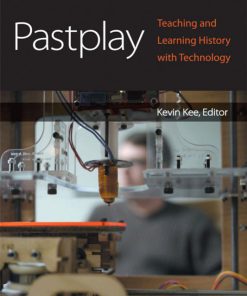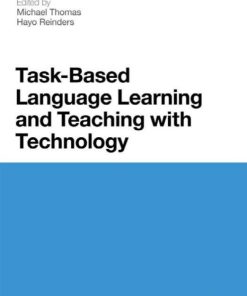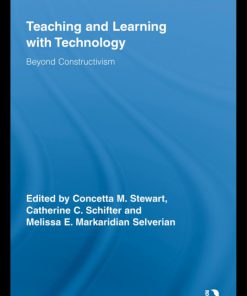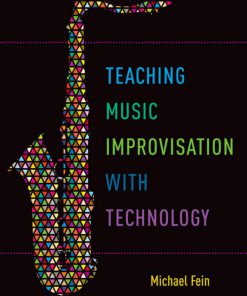(Ebook PDF) Learning and Teaching with Technology Principles and Practices 1st edition by Som Naidu 113572556X 9781135725563 full chapters
$50.00 Original price was: $50.00.$25.00Current price is: $25.00.
Authors:Som Naidu (edt) , Series:Education [304] , Tags:Social Sciences , Author sort:Naidu, Som , Languages:Languages:eng , Published:Published:May 2003 , Publisher:KOGAN PAGE , Comments:Comments:Social Sciences
Learning & Teaching with Technology: Principles and Practices 1st edition by Som Naidu – Ebook PDF Instant Download/DeliveryISBN: 113572556X, 9781135725563
Full download Learning & Teaching with Technology: Principles and Practices 1st edition after payment.
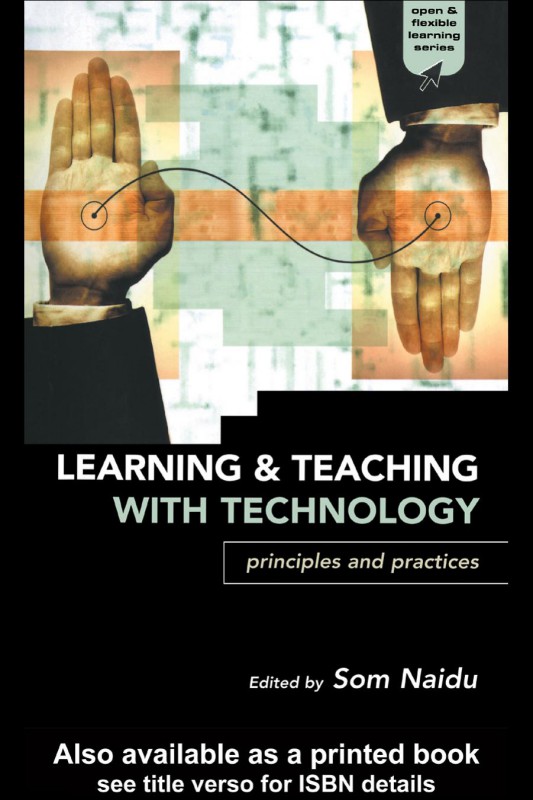
Product details:
ISBN-10 : 113572556X
ISBN-13 : 9781135725563
Author : Som Naidu
Increased use of electronic libraries, multimedia courseware and computer-mediated communication is giving rise to an entirely new educational experience, prompting educators to assess the potential for improved and enriched learning and teaching models. This new book explores the creative opportunities offered by ICT, and provides an authoritative, rigorous survey of the ways in which ICT is currently transforming core teaching functions, including: *subject matter representation *activating learning and the engagement of students *supporting interaction and socialization *assessing learning outcomes *providing feedback to students. Written by leading experts in the field, this text draws on the experiences of practitioners at the forefront of ICT developments, making this essential reading for all educational professionals who recognize the new opportunities afforded by this changed environment. Suitable for those who are open and flexible learning specialists, educational technologists or educational developers in either a conventional or an e-learning environment.
Learning & Teaching with Technology: Principles and Practices 1st Table of contents:
Part 1: Content representation
Chapter 1: Model facilitated learning
Introduction
A theoretically grounded framework
The potentials of models in learning
Learning with models
Learning by modelling
Learning by modelling and learning with models
Conclusions
References
Chapter 2: Implicit theories of learning and change: their role in the development of e-learning environments for higher education
Introduction
Implicit theories of learning and change
Main study
Analysis of the published descriptions of the projects
The internal logic of projects
Implications for the development of e-learning environments for higher education
Acknowledgement
References
Chapter 3: Designing graphical, interactive simulations to model scientific problem solving
Introduction
Theoretical background
Problem-based learning
Designing cognitive guideposts
Scientific reasoning and inquiry
Examples of successful simulation designs
Examples of problem-based learning
Examples of designing cognitive guideposts
Examples of scientific reasoning and inquiry
Refinements to design based on field testing
Summary and recommendations for future research
References
Chapter 4: Optimizing domain knowledge representation with multimedia objects
Introduction
Multimedia and cognitive skills
Multimedia objects and the Cognitive Apprenticeship framework
The MR approach
Multimedia objects selection
Navigational objects selection
Integration of multimedia objects
The InterSim system
The MR approach in the InterSim system
Multimedia objects selection
Navigational objects selection
Integration of multimedia objects
Concluding comment
References
Part 2: Activation of learning
Chapter 5: Using interactive video-based multimedia to scaffold learning in teacher education
Introduction
Embedding multimedia within teacher education
General features of QuILT
Philosophical, conceptual and procedural underpinning of the QuILT program
Situated cognition and cognitive apprenticeship
Metacognition, guided reflection and scaffolding
Metaphors used to frame the QuILT program: Overall metaphor of quilt construction
Structural metaphor: patches of the quilt
Operational metaphor: magnifying glass
Operational metaphor: lenses
Operational metaphor: mirror
Some trends arising from program use
Concluding comment
Acknowledgement
References
Chapter 6: Using authentic patient encounters to engage medical students in a problem-based learning curriculum
Introduction
Problem-based learning: Teaching and learning strategy
Activation
PBL cases
Medical triggers
Design considerations in creating medical triggers: Media deployed to create the medical trigger
Matching media to the message
Epistemological beliefs of designers
Recommendations
References
Chapter 7: Virtual learning in cultural studies: matching subject content and instructional delivery
Introduction
Review of the literature
Creating interactive environments
Cognitive flexibility, motivation and game-play protocols
Usability issues determining engagement of learning
Activating learning through the VSM
The VSM scenario
Quiz Zone
Retail Therapy
Integration and evaluation
Summary and conclusion
References
Chapter 8: Replicating practice complexities—multimedia innovation in social work education
Introduction
The context
The problem—replicating practice in the social work classroom
The LaSWoP project
The response—strengths and limitations of interactive technology
Critical attributes of multimedia developments within social work education
Conclusions
References
Part 3: Providing socialization support
Chapter 9: Tech e nology and second language learning through socialization
Introduction
Socialization and language learning
Interactionist SLA
Socio-interactive SLA theory
SLA, acculturation and identity
Networked, project-oriented L2 classrooms
L2 learning through socialization enabled by technology
Web-based projects as catalysts for social interaction
Negotiation of meaning in computer-mediated communication
Audience awareness and agency
Development of cross-cultural linguistic awareness
Distribution of power and identity development
Conclusions
References
Chapter 10: Developing social presence in online course discussions
Introduction
Background
Verbal immediacy behaviours of participants in online course discussion
Overall findings
Affective immediacy indicators
Cohesive immediacy indicators
Interactive immediacy indicators
Discussion
References
Chapter 11: Socialization through CMC in differently structured environments
Introduction
Constructivism
Collaborative learning
Socialization and community
Some empirical observations on different structures
A comparison of two distinct structures
Subject A
Subject B
Discussion
References
Chapter 12: Collaboration and community through simulation/role-play
Introduction
Review of the literature
Constructivism
Development of community
Experiential activities
Simulation/role-play activities
Simulations
Role-play
Online simulation/role-play
Simulation/role-play in e-learning environments: Mythica
Nature of the activity
Technology infrastructure
Roles of instructor and of students
Recommendations
References
Part 4: Assessment of learning outcomes
Chapter 13: Broadening assessment strategies with information technology
Traditional and Web-based assessment compared
Pedagogical models of online assessment
Learning outcomes and assessment
Resource-based assessment
Authentic assessment
Examples of online assessment that support multiple indicators of performance
Example 1: Networked peer assessment
Example 2: Problem solving online
Example 3: Using online portfolios
Overcoming the disadvantages of traditional assessment
The future of online assessment
References
Chapter 14: Applying assessment principles and expanding the focus of assessment to enhance learning online
Introduction
The role of assessment in learning
Principles of effective assessment
Expanding the focus of assessment
Examples of assessment tools and tasks
Assessing motivational, cognitive and metacognitive aspects
Assessing affective aspects
Assessing cognitive and metacognitive aspects
Other assessment tools
Conclusion and recommendations
References
Chapter 15: The use of online assessment in stimulating a deeper approach to learning
Introduction
Purpose of assessment
Approaches to learning
Assessment to stimulate deep approaches to learning
Online assessment
Conclusion
References
Chapter 16: Cognitive apprenticeship learning—ensuring far transfer of knowledge through computer-based assessment
Introduction
Assessments: theoretical models, types and role in knowledge acquisition
Phases of skill acquisition and the cognitive apprenticeship framework
Feedback from an independent evaluation
The way forward
Extending the ITT methodology on to the Internet
Improving diagnostics through process modelling
Conclusion
References
Part 5: Providing feedback
Chapter 17: A feedback model and successful e-learning
Introduction
Type of feedback and its impact on learning
Timing of feedback
Sources of feedback
A model of effective feedback
Feedback and Web-based simulations
Feedback and Web-based discussion boards
Conclusion
References
Chapter 18: Interactivity and feedback as determinants of engagement and meaning in e-learning environments
Introduction
The importance of feedback
Communication
Participants as actors
Maximizing the benefits of feedback
E-learning and interactivity
Interactive agents
Feedback strategies to enhance e-learning
Communities of inquiry
Making it work
Conclusion
References
Chapter 19: Fundamentals for structuring feedback in an online learning environment
Introduction
Educational role and impact of feedback
Implications for instructors
Some fundamentals
Automatic, personal, or both?
Leveraging feedback benefits through e-learning
People also search for Learning & Teaching with Technology: Principles and Practices 1st:
teaching and learning with technology 6th edition
penn state teaching and learning with technology
teaching and learning with technology pdf
enhancing learning and teaching with technology what the research says
teaching and learning with technology effectiveness of ict integration

